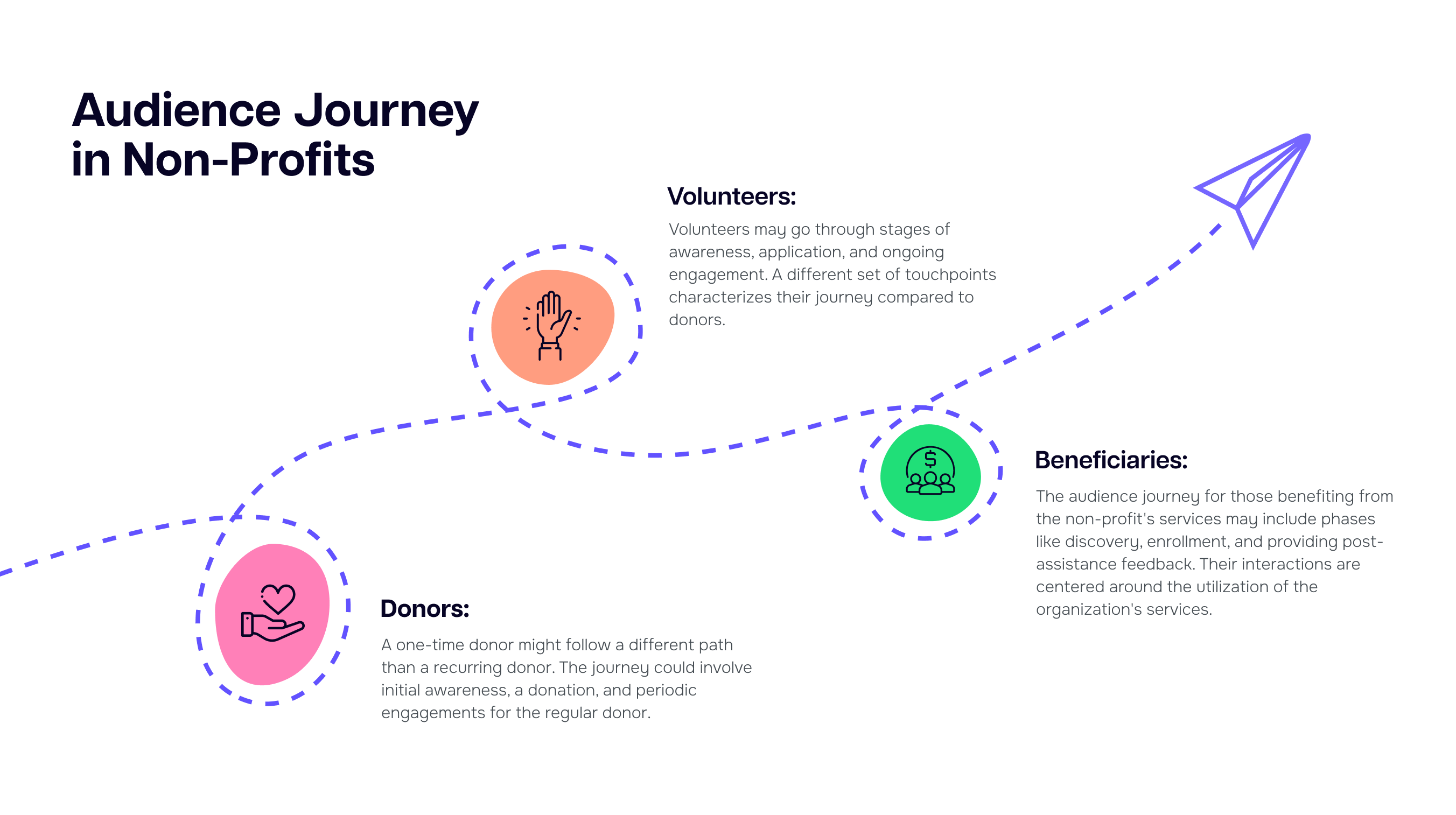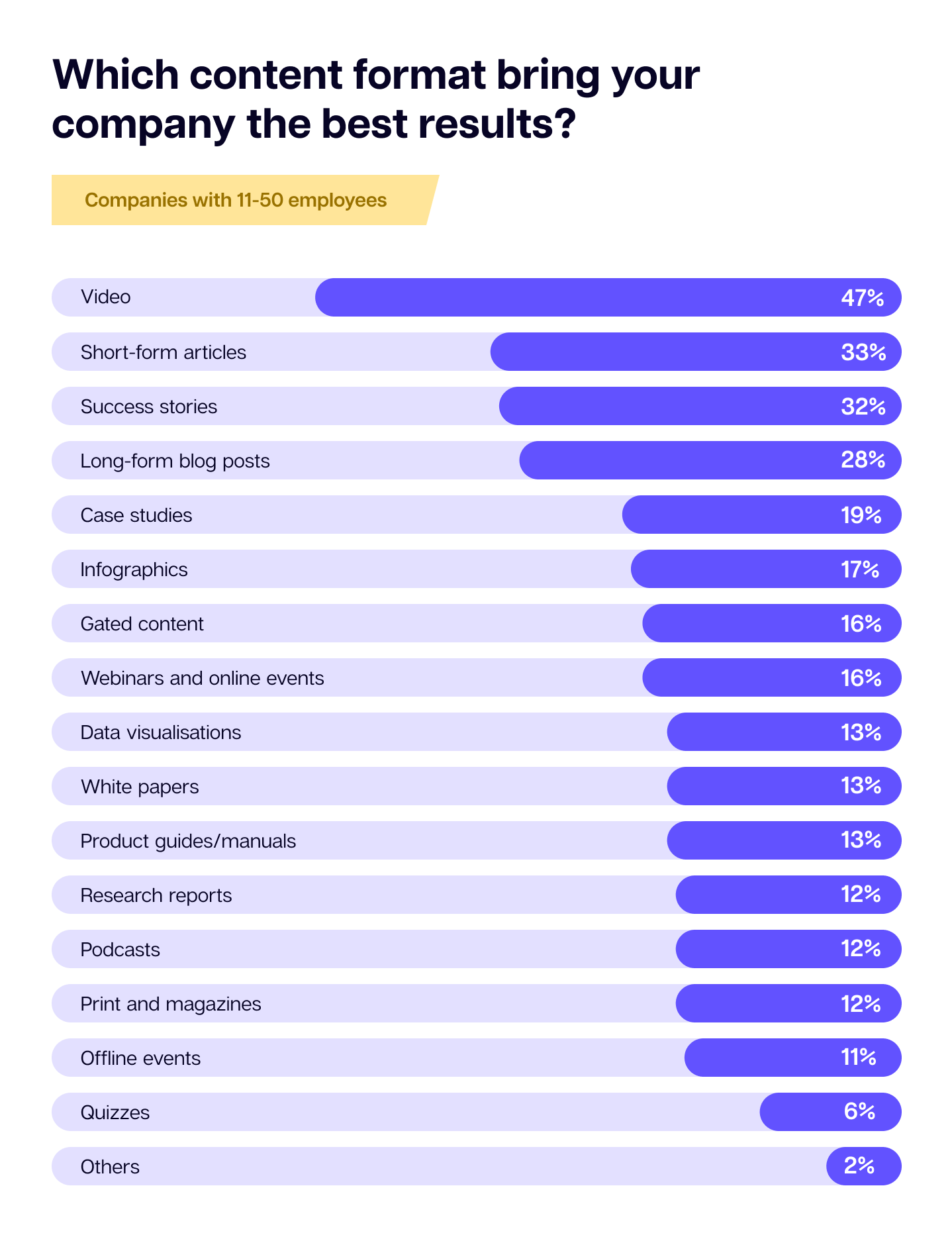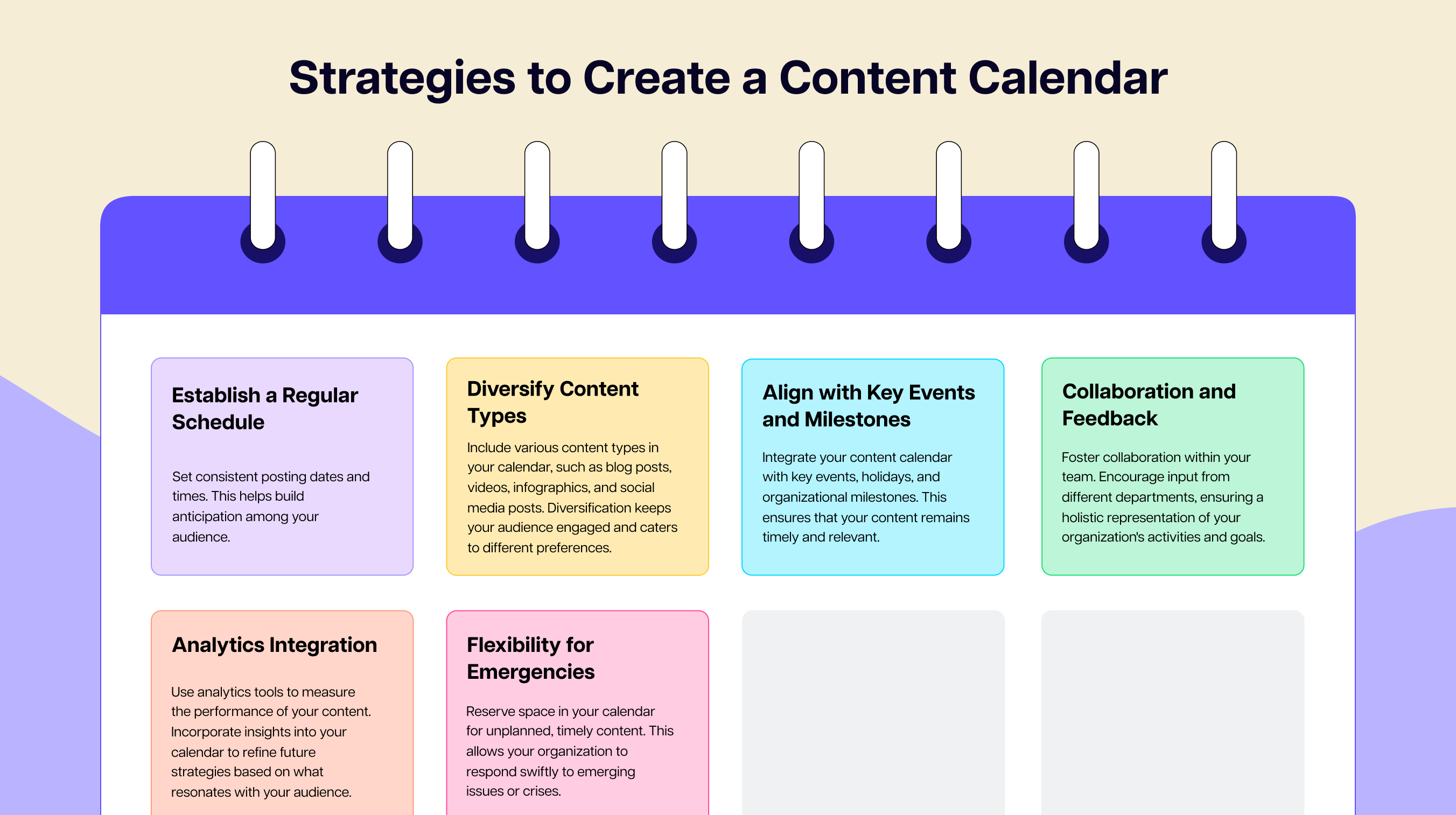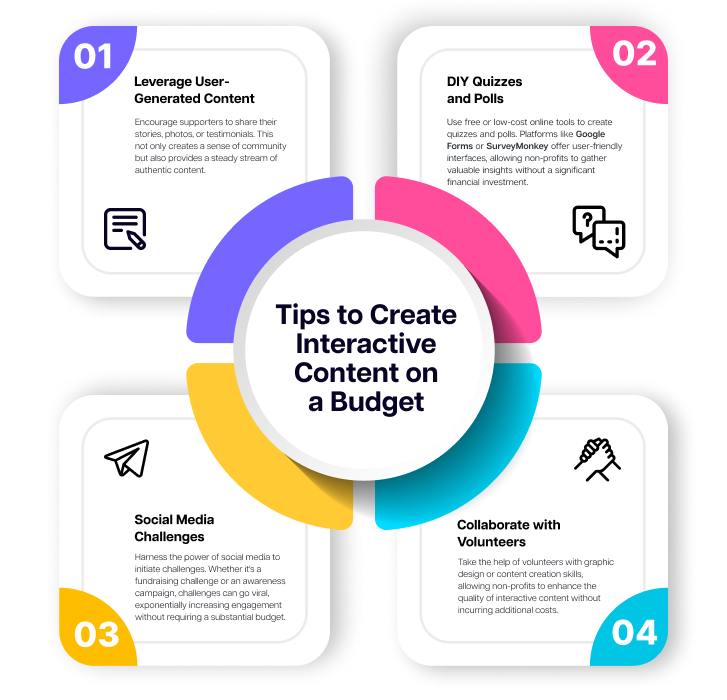A Beginner’s Guide to Using Content Marketing for Non Profits

When we talk about content marketing for non profits, it involves all the written and multimedia assets you publish online to inform your stakeholders and make them a part of your mission. This content includes social media posts, blogs, emails, videos, case studies, and more. It’s not the flashy annual fundraising campaign, but having good, regular content is key for non profits today.
Why?
Because the way people act has changed. Your donors, program participants, funders, supporters, and even possible new hires want to check you out online before meeting you. They expect the content you provide to be exciting and top-notch.
Content marketing might not seem as efficient as outbound marketing techniques such as paid ads or mail, but it’s a smart move. In fact, it’s three times more likely to get noticed than paid search ads, according to the Content Marketing Institute.
By doing content marketing well, you’re not just helping yourself. You’re making the internet a better place for information about the mission your nonprofit cares about, which is a win-win situation.
Understanding the Non-Profit Audience
In today’s dynamic landscape, effective communication is crucial for the success of nonprofits. Understanding your audience is the cornerstone of impactful messaging, which involves not only recognizing the diverse groups that make up your audience but also breaking down their unique needs, motivations, and concerns.
Identifying and Segmenting Your Audience
Understanding who your organization is trying to reach makes your marketing efforts more successful. Knowing the types of people likely to support your organization’s mission helps you decide what content to create and where and how to share it.
Tailoring messages is a direct result of understanding your audience. This involves crafting content that speaks directly to the unique needs and preferences of specific groups within your larger audience. Efficient allocation of resources is another key benefit. By targeting particular segments, non-profits can channel their efforts and resources more effectively, maximizing the impact of their outreach initiatives.
To achieve effective segmentation, consider two crucial aspects — demographics and behavioral traits.
- Demographics: Consider age, gender, and location when segmenting your audience. This ensures that your communication is not one-size-fits-all but tailored to different groups’ characteristics. To illustrate, campaigns can be tailored differently for youth, seniors, or specific geographic regions, acknowledging each group’s distinct preferences and needs.
- Behavioral Traits: Analyze behaviors like donation patterns and volunteer engagement. Understanding these traits enables non-profits to create segments based on how individuals interact with and contribute to their cause. For instance, donors can be segmented based on their preferred contribution method, whether it’s one-time donations, recurring contributions, or other forms of engagement.
Mapping Out the Audience Journey
The audience journey encompasses an individual’s various touchpoints and interactions with a non-profit, from initial awareness to becoming a supporter.
Understanding this journey is crucial for crafting a communication plan that resonates with supporters at every stage.

Creating a Content Strategy
As mentioned before, nonprofits have no “one-size-fits-all” content strategy. Every nonprofit has its own story and mission, so your marketing plan should be designed to suit your content needs.
It’s a good idea to begin by setting clear goals. Knowing where you want to end up in the long run is also essential. It might seem overwhelming, but it becomes much simpler once you know the first steps.
Setting Clear Objectives
Crafting a content strategy for a nonprofit requires addressing a fundamental question: Why are we investing time and effort in creating and promoting content?
The answer lies in clearly defined content marketing goals. This process involves a thoughtful cascade, linking your organization’s strategic plan, marketing plan, and content objectives.
Let’s explore this approach to ensure your content efforts align seamlessly with your mission.
- Study the Nonprofit’s Strategic Plan: Start by thoroughly understanding the goals outlined in your nonprofit’s strategic plan, focusing on critical areas such as awareness building, fundraising, and volunteer recruitment. These form the foundation of your organization’s mission and initiatives.
- Align Content Goals with Marketing Objectives: Develop nonprofit content marketing goals that directly correlate with your marketing plan. This alignment ensures that your content strategy contributes effectively to the mission outlined in the strategic plan.

- Utilize Objectives and Key Results (OKR) Model: In an ideal scenario, your content goals should be time-bound and measurable. Adopting the OKR model enhances clarity and precision, making your goals more actionable and trackable.
Choosing the Right Channels
Your business can use its local content strategy as a powerful tool to stand out. Start by diving deep into your content and what your competitors are putting out. Figure out what’s connecting with audiences and what’s not. Once you’ve got a good idea of your competitors’ targeting, aim to recreate that success with your upcoming content.
Your content plan should have a mix of different types of content, like:
- Blog posts
- Real-life examples
- Detailed reports
- E-books
- Easy-to-read graphics
- Videos
- Online seminars

The strategic decision of choosing the proper communication channels requires a nuanced understanding of nonprofit needs. By carefully weighing the pros and cons of each channel, nonprofits can craft a comprehensive communication strategy that maximizes impact and engagement with their target audience.
Developing a Content Calendar
A content calendar aligns your content strategy with overarching goals. It provides a 360-degree view of your content plan, ensuring that each piece contributes cohesively to your organizational objectives. Moreover, consistency in messaging is key for brand identity and audience engagement. A content calendar allows you to plan and deliver messages consistently, strengthening your organization’s mission and values.
Planning content in advance allows for the efficient allocation of resources. Whether it’s time, budget, or creative energy, a content calendar enables you to distribute these resources accordingly.
Below are some of the examples of tools required for creating practical content calendars:
- Google Calendar: A simple and widely accessible tool for collaborative calendar creation.
- Trello: Offers a visual approach with boards and cards, allowing teams to track and collaborate on content projects.
- Content Management Systems (CMS): Platforms like WordPress or HubSpot often have built-in content scheduling features.

Crafting Compelling Content
It’s essential to consider what kind of content will suit your audience, your goals, and your company’s mission. However, storytelling is a crucial aspect of a content strategy for nonprofits, as your brain lights up with interest when you’re engaged in a compelling story. Let’s understand what it actually means!
Storytelling for Impact
Stories have an unparalleled ability to connect people emotionally to a cause. Real-life stories from those directly impacted by the non-profit’s work — be it beneficiaries, volunteers, or donors – carry an authenticity that resonates profoundly. These stories humanize the mission, making it relatable and compelling for the audience.
Non-profits should strive to present genuine narratives, avoiding exaggeration or embellishment. Authentic stories build trust and credibility, fostering a stronger connection between the organization and its supporters.
Effective storytelling taps into emotions. It’s about creating narratives that evoke empathy, compassion, or inspiration. By conveying the emotional journey of individuals connected to the non-profit, the audience will more likely forge a deep, meaningful connection with the cause.
Educating and Inspiring Content
The role of content extends beyond mere information distribution; it becomes a powerful tool for providing value, education, and inspiration.
Educational content forms the backbone of a non-profit’s outreach efforts. By offering valuable insights, information, and knowledge, organizations position themselves as authoritative sources within their domain. This can take various forms, such as infographics that dive into complex concepts in visually appealing formats, webinars that explore specific topics, or articles that provide in-depth analysis and understanding.
Engaging and Interactive Content
Interactive content goes beyond passive consumption, encouraging the audience to participate actively in the narrative. The value of interactive content, which invites participation and fosters a sense of connection, is increasingly recognized as a powerful tool for non-profits.
Quizzes, polls, and challenges are notable examples that capture attention and create a two-way communication channel. Quizzes invite users to test their knowledge, polls solicit opinions, and challenges encourage supporters to take direct action, turning the audience into collaborators in the non-profit’s mission.

Promoting and Distributing Content
Once you’ve made content for your website and local platforms, it’s time to distribute it on social media platforms, as it’s a powerful tool for connecting with your local crowd and promoting your business. You can distribute content through organic promotion or partnering with external entities such as influencers and ambassadors.
Organic Promotion
Organic promotion involves distributing content that naturally aligns with the organization’s message and mission. This approach often relies on word of mouth, social sharing, and genuine engagement from the audience.
- Non-profits can leverage owned channels to maximize the reach of their content, including the organization’s website, email newsletters, and social media platforms.
- The website serves as a centralized hub for information, allowing people to access a wealth of content.
- Email newsletters provide a direct line of communication to engage with the audience regularly.
Social media platforms like Facebook, Twitter, and Instagram allow non-profits to share content, interact with followers, and amplify their messages through shares and retweets.
Nonprofits should consider SEO a valuable tool to enhance their online visibility. By optimizing website content for relevant keywords and ensuring that it aligns with the organization’s mission, non-profits can improve their ranking on search engine results pages. This, in turn, increases the likelihood of their content being discovered by individuals searching for related topics.
Partnering With Influencers and Ambassadors
Partnering with influencers and ambassadors is a dynamic strategy for non-profits aiming to expand their reach and impact. By collaborating with figures who share a genuine interest in the cause, organizations can leverage existing networks to create authentic connections with a broader audience.
The careful approach outlined by research, relationship-building, clear communication, engaging content, and mutual benefit ensures that these collaborations are not just transactions but meaningful partnerships that contribute significantly to the organization’s mission.
Measuring Success and Adapting
Last but not least, create a plan for measuring the performance of your content in your strategy document. Here are some of the metrics you should focus on:
- Engagement Rates
- Donations Received
- Volunteer Sign-Ups
- Organic and Inorganic Page Views
- Number of Downloads
- Lead Generation
Make sure the KPIs align with the end goal of your local content marketing strategy. Once you figure out what works well with your audience, make adjustments and changes accordingly.
To facilitate continuous improvement, non-profits can leverage many tools and platforms for tracking and analytics. These tools provide valuable insights into the performance of communication initiatives, allowing organizations to make data-driven decisions.
- Google Analytics is a robust platform for tracking website metrics, including visitor demographics and behavior.
- Social media platforms offer built-in analytics tools that deeply understand audience engagement, reach, and interactions.
- Email marketing platforms, such as Mailchimp or Constant Contact, offer analytics features to measure the effectiveness of email campaigns.
Using tracking and analytics tools empowers organizations to make informed decisions, fostering adaptability and resilience in the face of evolving challenges and opportunities.
In this way, non-profits can not only navigate the complexities of the communication landscape but also enhance their effectiveness in advancing their mission.
Conclusion
Content marketing is a valuable and cost-efficient way for nonprofits to support their cause. By putting time and effort into creating a content marketing plan, you can make the most of its advantages.
If you’re looking for content writing services for your non-profit organization, Pepper Content is here to help! Book a demo now to get started!
Latest Blogs
Explore how Google’s 2025 AI search updates triggered ranking chaos. Learn actionable strategies to adapt your SEO for AI Overviews, zero-click searches, and SERP volatility. Stay ahead now.
Learn how to rank on AI search engines like ChatGPT, Perplexity, and Gemini by optimizing your content for authority, structure, and relevance. Stay ahead in AI-driven search with this strategic guide.
Explore the best healthcare SEO services for your medical practice. Improve online visibility and effectively reach more patients in need of your services.
Get your hands on the latest news!
Similar Posts

Content Strategy
5 mins read
Choosing The Best Healthcare Marketing Agency For Effective Content Solutions

Content Marketing
4 mins read
Top 10 Agencies B2B SaaS Content Marketing for B2B Success

B2C Marketing
5 mins read